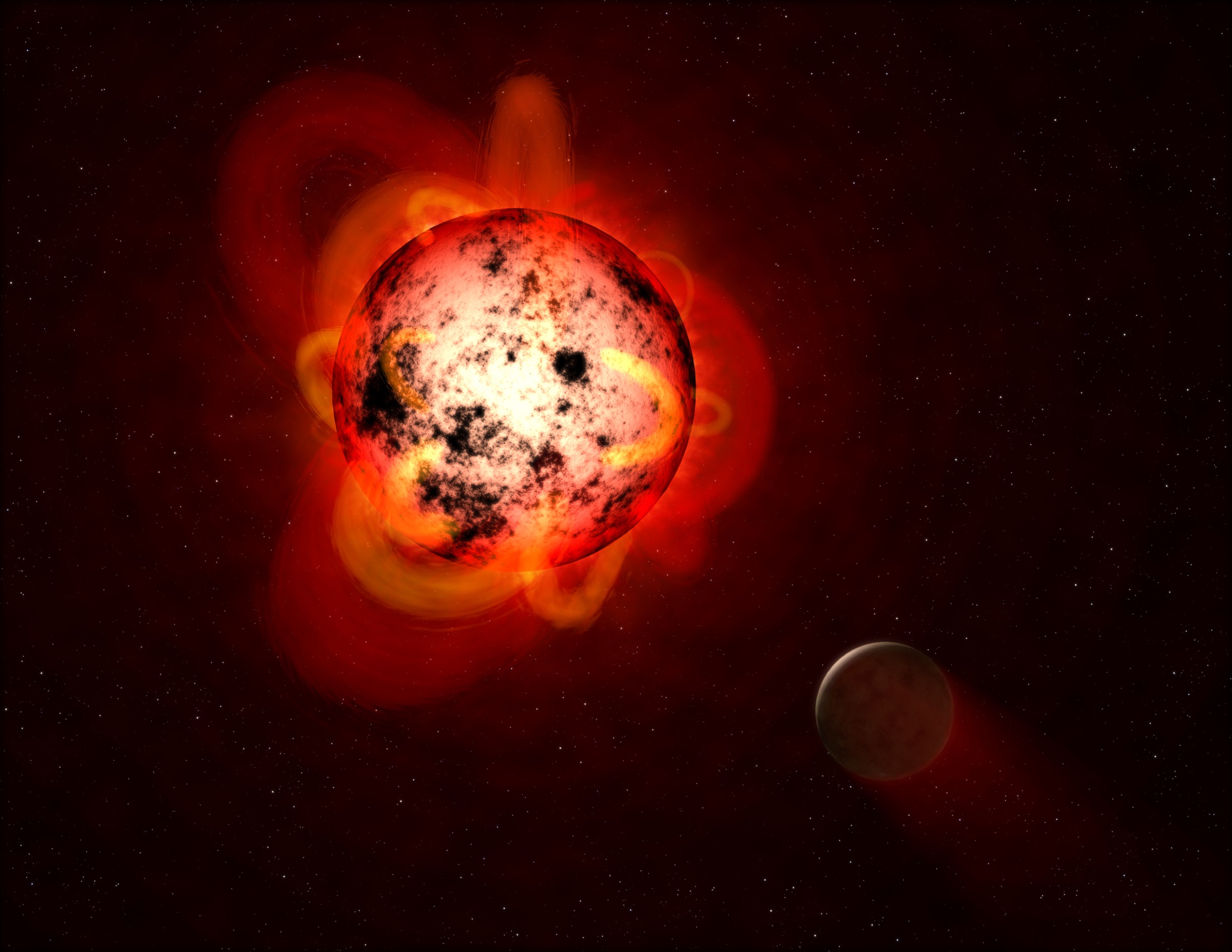X-Rays Could Spell Doom for Life on Planets Around Red Dwarfs

Intense radiation from red dwarf stars could make their planets uninhabitable or restrict life on such worlds to the oceans, a new study suggests.
Red dwarfs are smaller, and shine less brightly, than our sun. These dim stars make up about 75 percent of the Milky Way's stellar population, and many of them are known to host planets in the "habitable zone" — the range of distances that could theoretically support the existence of liquid water on a world's surface.
Indeed, the closest exoplanet to Earth, Proxima b, lies in the habitable zone of a red dwarf (Proxima Centauri, which is about 4.2 light-years from the sun). [Proxima b: Closest Earth-Like Planet Discovery in Pictures]
But it's unclear just how habitable such worlds actually are. Because red dwarfs are so dim, their habitable zones lie quite close-in. The trouble is, red dwarfs can produce nasty X-ray emissions — not to mention radiation from coronal mass ejections (CMEs), eruptions that blast massive amounts of charged plasma out into space.
Other studies have already found that Proxima b may not be as habitable as once believed, because its star is volatile. The new study looks at another star system to discern its environment.
"Astronomers are mounting a global effort to find Earth-like worlds, and to answer the age-old question of whether we are alone in the universe," lead author Eike Guenther, an astronomer at Thueringer Observatory in Germany, said in a statement released by the London-based Royal Astronomical Society. "With sporadic outbursts of hard X-rays, our work suggests planets around the commonest low-mass stars are not great places for life, at least on dry land."
Guenther's team observed a flare from the red dwarf star AD Leo in February. The star is just 16 light-years from Earth and may host small, rocky planets in its habitable zone. Astronomers already know of a gas-giant planet that is very close to the parent star, at just 0.02 astronomical units (AU). That's 50 times closer than the equivalent distance between Earth and the sun. (One AU is the average Earth-sun distance — about 93 million miles, or 150 million kilometers.)
Get the Space.com Newsletter
Breaking space news, the latest updates on rocket launches, skywatching events and more!
The data are still being analyzed, but early results hint that the flare did not appreciably affect the giant planet. Better yet, the flare was not accompanied by a CME, which commonly happens at the sun. Since such ejections could potentially strip a small planet of its atmosphere, this might be good news for life, according to the statement.
However, the star's bursts of X-ray radiation may still be a factor in the system. Such radiation could hit surface life on a habitable-zone planet hard, although ocean creatures might be safe, the researchers said.
The team is still refining its model to understand the emissions' impact on nearby planets. Some research suggests that a giant radiation flare could destroy the ozone layer of a planet, reducing it by 94 percent for around two years. If that happened, all surface life might be doomed, they said.
"If they are right, then talk of 'Earth 2.0' [around a red dwarf] may be premature," Royal Astronomical Society representatives said in the statement.
The work was presented today (April 3) at the European Week of Astronomy and Space Science conference in Liverpool, England.
Follow us @Spacedotcom, Facebook and Google+. Original article on Space.com.
Join our Space Forums to keep talking space on the latest missions, night sky and more! And if you have a news tip, correction or comment, let us know at: community@space.com.

Elizabeth Howell (she/her), Ph.D., was a staff writer in the spaceflight channel between 2022 and 2024 specializing in Canadian space news. She was contributing writer for Space.com for 10 years from 2012 to 2024. Elizabeth's reporting includes multiple exclusives with the White House, leading world coverage about a lost-and-found space tomato on the International Space Station, witnessing five human spaceflight launches on two continents, flying parabolic, working inside a spacesuit, and participating in a simulated Mars mission. Her latest book, "Why Am I Taller?" (ECW Press, 2022) is co-written with astronaut Dave Williams.









